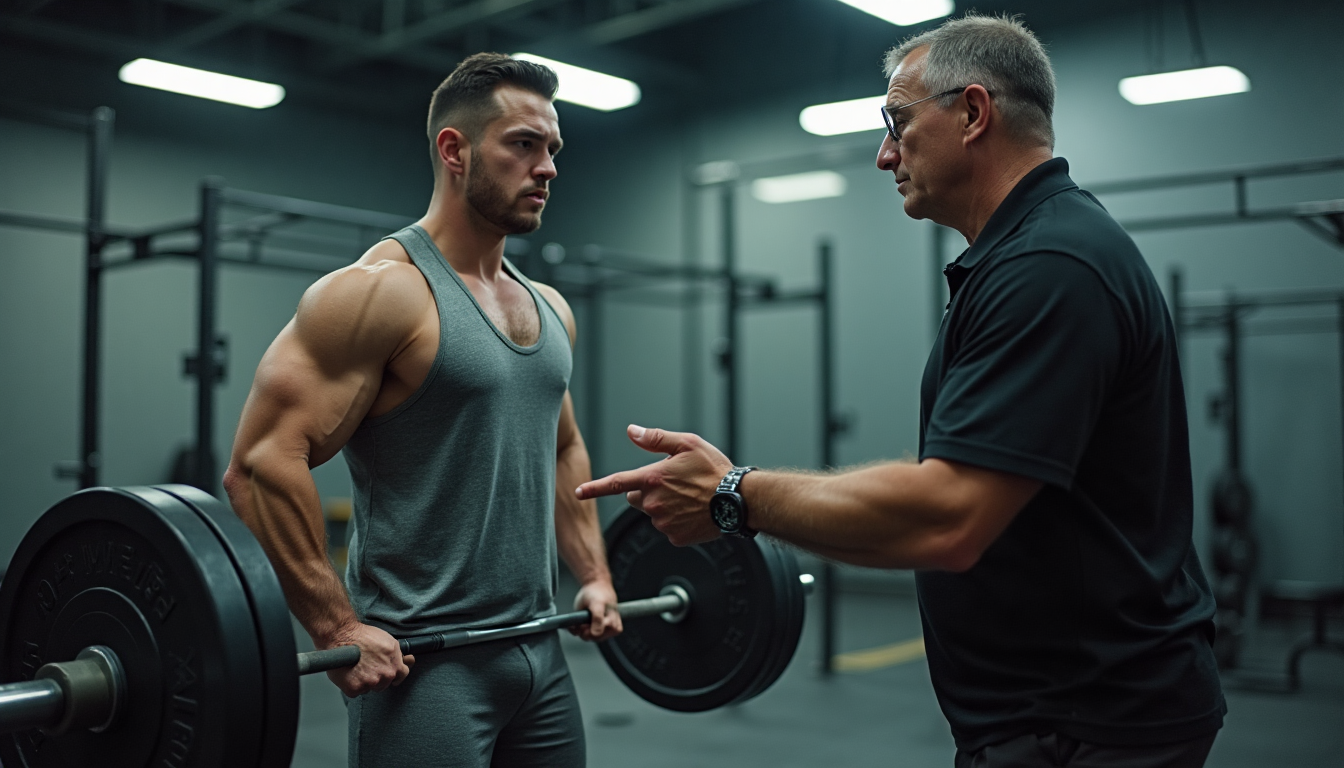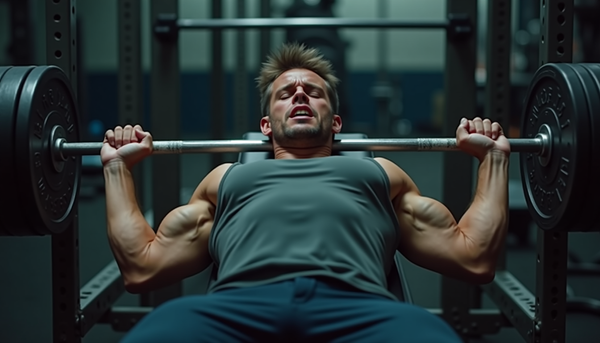Why Your Gym Routine is Backwards

I used to be that guy who'd hobble out of the gym feeling "accomplished" because I could barely walk. You know the type—more weight, more reps, more everything. Until my lower back decided to stage a revolt that lasted six months and forced me to question everything I thought I knew about fitness.
That's when I stumbled across something that completely flipped my understanding of what it means to train smart versus train hard.
The Energy-First Revolution
Here's what nobody tells you: your body is basically a sophisticated energy management system, and most of us are running it like a gas-guzzling truck from the 80s. We're so focused on the mechanical aspects—how much weight, how many sets, proper form (which, don't get me wrong, matters)—that we completely ignore the energetic foundation that makes everything else possible.
I learned this the hard way when I met John Du Cane's work during my back injury recovery. This guy's been practicing qigong since 1975 and helped bring kettlebells to the masses through his partnership with Pavel Tsatsouline. But here's the kicker: his secret weapon isn't some revolutionary training technique. It's understanding that breath is energy, energy is life, and if you're not breathing properly, you're basically trying to drive a Ferrari on fumes.
Sounds a bit woo-woo? I thought so too. Until I tried it.
The Breathing Crisis Nobody's Talking About
Let me ask you something: when was the last time you paid attention to how you breathe during a workout? Not just "remember to breathe," but actually noticed the quality, depth, and timing of your breath?
Most of us breathe like we're constantly running from a bear. Shallow, rapid, all up in our chest. Meanwhile, our core—which should be the powerhouse of every movement—is basically asleep at the wheel.
Iron shirt qigong, which Du Cane specifically recommends for martial artists (but honestly works for anyone), teaches you to breathe in a way that naturally engages your core muscles. It's like having an internal strength suit that activates automatically when you need it.
The game-changer isn't just the physical aspect. When you start breathing properly, something weird happens: you begin to develop what I can only describe as an internal GPS. Call it intuition, body awareness, whatever—it's that little voice that tells you when to push harder and when to back off. The voice I completely ignored for years while accumulating injuries like Pokemon cards.
My Kettlebell Wake-Up Call
Speaking of ignoring internal signals, let me tell you about my first encounter with a kettlebell. Picture this: confident gym-goer who could deadlift respectable weight, thinking a 35-pound ball with a handle would be a fun warm-up.
Wrong. So, so wrong.
That humble kettlebell exposed every weakness I didn't know I had. Bad posture? Check. Terrible breathing pattern? Double check. Complete inability to coordinate tension and relaxation? Triple check with a side of humbled ego.
But here's what fascinated me: it wasn't about strength. I was strong enough. It was about precision, timing, and this concept that Connor McGregor nailed: "Accuracy beats strength, and timing beats speed."
The kettlebell swing, when done properly, is like a meditation in motion. You're learning to create explosive power while staying completely connected to your breath and core engagement. It's the exact opposite of mindless grinding, and honestly? Way more satisfying than chasing numbers on a bar.
The RKC (Russian Kettlebell Challenge) that Du Cane and Pavel created became this global phenomenon partly because people were starving for this kind of integrated training. Something that built strength AND resilience AND mental focus all at once.
Building Your Internal Training Compass
Here's where things get interesting. After months of focusing on breath-first training, I started noticing patterns. Not just in the gym, but in life decisions, stress management, even relationship dynamics. It's like I developed this internal compass that helped me navigate not just workouts, but everything.
Du Cane talks about this as training your "inner self"—developing the intuition that helps you make decisions that feel right, not just logically sound. I used to think this was mystical nonsense. Now I think it's the most practical skill you can develop.
Think about it: how many times have you pushed through a workout when your body was screaming for rest? How many injuries could've been prevented if you'd actually listened to those early warning signals? How much more progress could you make if you trained based on what your body actually needed rather than what some generic program dictated?
This internal awareness doesn't develop overnight. Du Cane mentions it takes years to master the energy aspects of qigong, and honestly, that timeline scared me at first. We're so used to quick fixes and 30-day transformations. But here's what I've learned: the journey IS the destination.
The Sustainable Practice Protocol
Alright, enough philosophy. Here's how to actually implement this stuff:
Start with 10 minutes daily of focused breathing practice. Not meditation, not complicated qigong forms. Just sit somewhere quiet and breathe deeply into your belly for 10 breaths. Notice what happens to your core muscles naturally. This is your foundation.
Apply the breath-core connection to your existing workouts. Before every set, take three deep breaths and feel your core engage. Maintain that connection throughout the movement. You'll probably need to reduce weight initially—your ego might hate it, but your body will thank you.
Embrace the beginner's mind with kettlebells. If you're new to them, start ridiculously light. Focus on the hip hinge movement and breath coordination before adding weight. If you're experienced but injury-prone, strip back to basics and rebuild with breath awareness.
Track energy levels, not just performance metrics. Rate your energy on a 1-10 scale before and after workouts. Notice patterns. Good training should leave you energized, not destroyed.
Practice the pause. When your internal voice says "maybe not today," actually listen. Rest isn't failure; it's information.
The Long Game Perspective
Look, I'm not saying traditional strength training is wrong or that you need to abandon your current program and become a qigong monk. What I am saying is that adding this energetic awareness layer to whatever you're doing will make everything work better and last longer.
The pursuit of physical perfection is, as the original article mentions, "the journey of a lifetime." But here's my twist on that: perfection isn't about executing flawless movement patterns or achieving specific numbers. It's about developing such intimate awareness of your body's signals that you can adapt, adjust, and evolve your practice as you age.
I'm still learning this stuff. Some days my internal compass is crystal clear; other days it's like trying to navigate in a fog. But even on the foggy days, I'm infinitely more connected to my body than I was during my "beat myself into submission" phase.
The real question isn't whether there's more to life than daily routines and duties—though training with awareness definitely makes those routines feel more alive and connected. The real question is: are you willing to slow down enough to actually feel what's happening in your body while you're training it?
Because once you start paying attention to that conversation between your conscious mind and your body's wisdom, everything changes. Your workouts become more intuitive, your recovery improves, and weirdly enough, your progress often accelerates because you're finally working with your system instead of against it.
So here's your homework: pick up a copy of Du Cane's "Qigong Recharge" if you want the deep dive, or just start with the breathing practice I mentioned above. Give it a month of consistent practice and see what you notice.
And hey, if nothing else, you'll probably stop hobbling out of the gym like you've been hit by a truck. Your future self will thank you for that alone.




